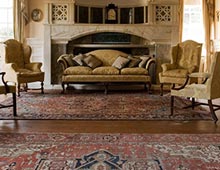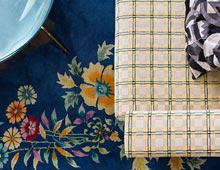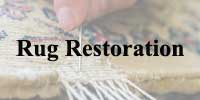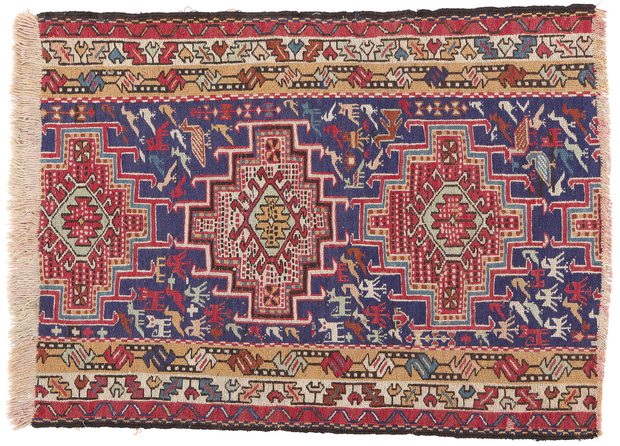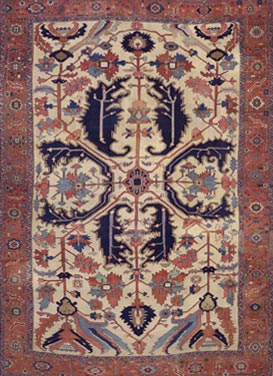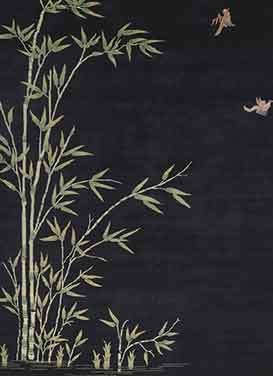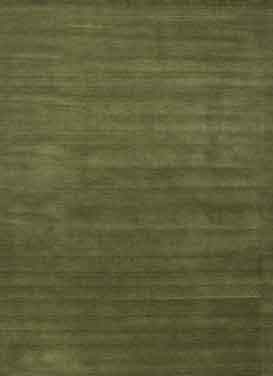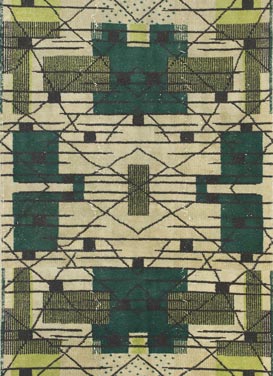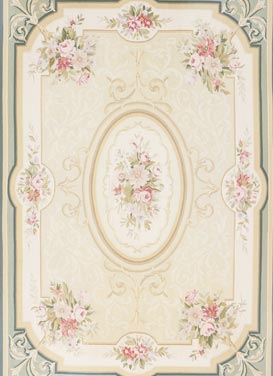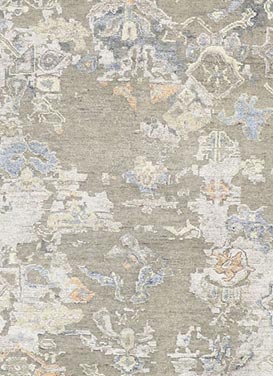Description
78942 Antique Caucasian Soumak Rug, 03'01 x 04'02.
This enchanting handwoven wool antique Caucasian Soumak rug is a tableau of symbolic artistry and masterful weaving, steeped in the cultural traditions of the Caucasus region. The tribal rug's design centers around three bold latch hook medallions, known as the Wheel of Life, which symbolize the cyclical nature of man’s existence. These medallions, artfully woven in vibrant reds, beige, light green and pale orange, are adorned with sun symbols and pinwheels, each representing life, energy, and the passage of time. The dynamic nature of these ambiguous motifs is further accentuated by the lively blue field, which serves as a vibrant canvas for a menagerie of symbolic creatures and geometric motifs.
The captivating blue field is intricately covered with a diverse array of animal figures, each carrying its own cultural and esoteric significance. Birds, roosters, ducks, and peacocks appear to dance across the rug, representing faith, fertility, protection, and spirituality. The presence of roosters, in particular, is believed to ward off the evil eye, adding a protective aura to the Caucasian rug. Dragons and eagles, symbols of power and strength, coexist with gazelles, which embody grace and agility, necessary virtues for overcoming life’s harsh environments. Dogs woven into the design reflect loyalty, protection, and a sense of companionship, while the presence of jugs or ewers alludes to purification and spiritual renewal. Every figure and form within this rich canvas contributes to a complex narrative that weaves together themes of protection, faith, and endurance.
Framing the central field is a beautifully rendered double border, each with its own intricate motifs that deepen the rug’s narrative. The inner border showcases a rhythmic series of meandering hook motifs, a classic symbol of protection often used in Caucasian designs to guard against malevolent forces. Beyond this, the main border of stylized leaf and calyx patterns, reminiscent of the delicate rim of a wine glass, adds a layer of refined elegance and mystique. This pattern is often associated with life’s blooming potential and renewal, hinting at a deeper, contemplative dimension. Completing the composition is a narrow guard border featuring a continuous “running water” motif, symbolizing the constant flow of life and the strength gained through overcoming adversity.
The rich symbolism and vibrant artistry of this antique Caucasian Soumak rug make it not just a decorative piece but a profound expression of the weaver’s worldview and heritage. The harmonious interplay of colors, the meticulous detailing of the motifs, and the bold, rhythmic symmetry of the design speak to the nomadic charm and resilience of Caucasian tribal art. This Caucasian tribal rug, with its intricate narrative woven into every thread, is not merely a floor covering but a tangible connection to the past, reflecting the endurance, faith, and spirit of the people who created it. Its compact size makes it perfect for adding a touch of historical charm and artistic depth to any space, offering a window into a world rich with symbolism and cultural significance.
- Distressed. Desirable Age Wear.
- Abrash.
- Handwoven wool. Embroidered.
- Made in Old Russia (Caucasus Region).
- Measures: 03'01 x 04'02.
- Pile Height: 0.11 of an inch.
- Date: 1900's. Early 20th Century.



